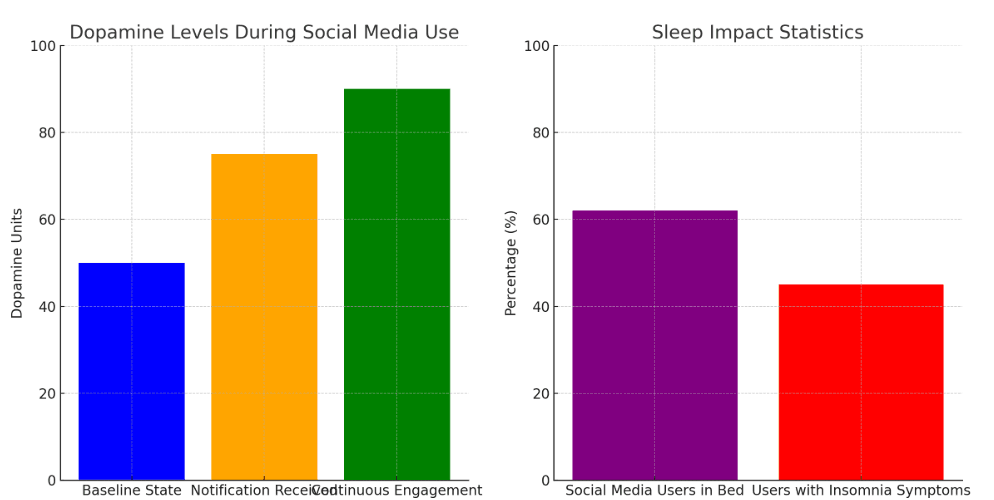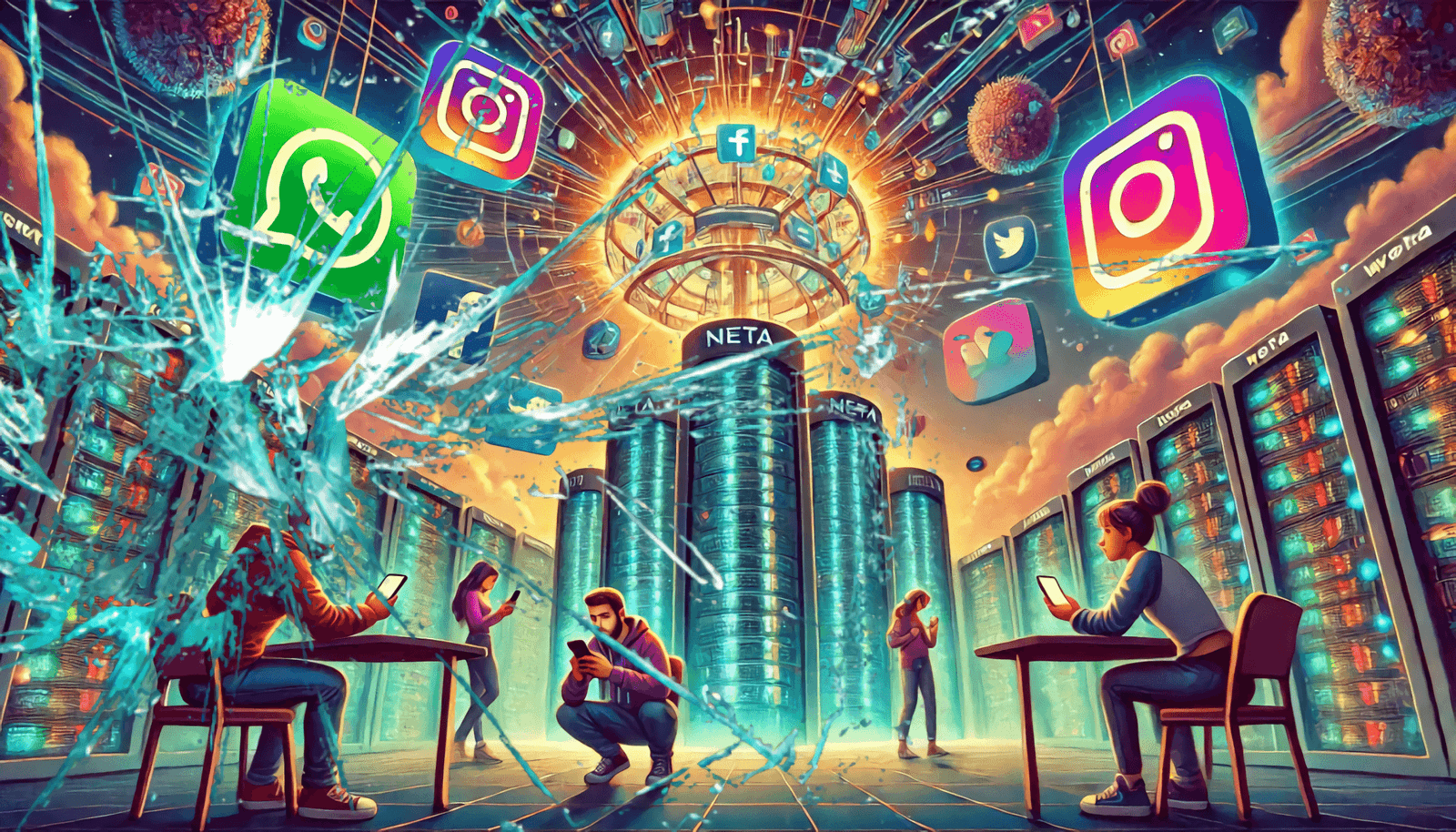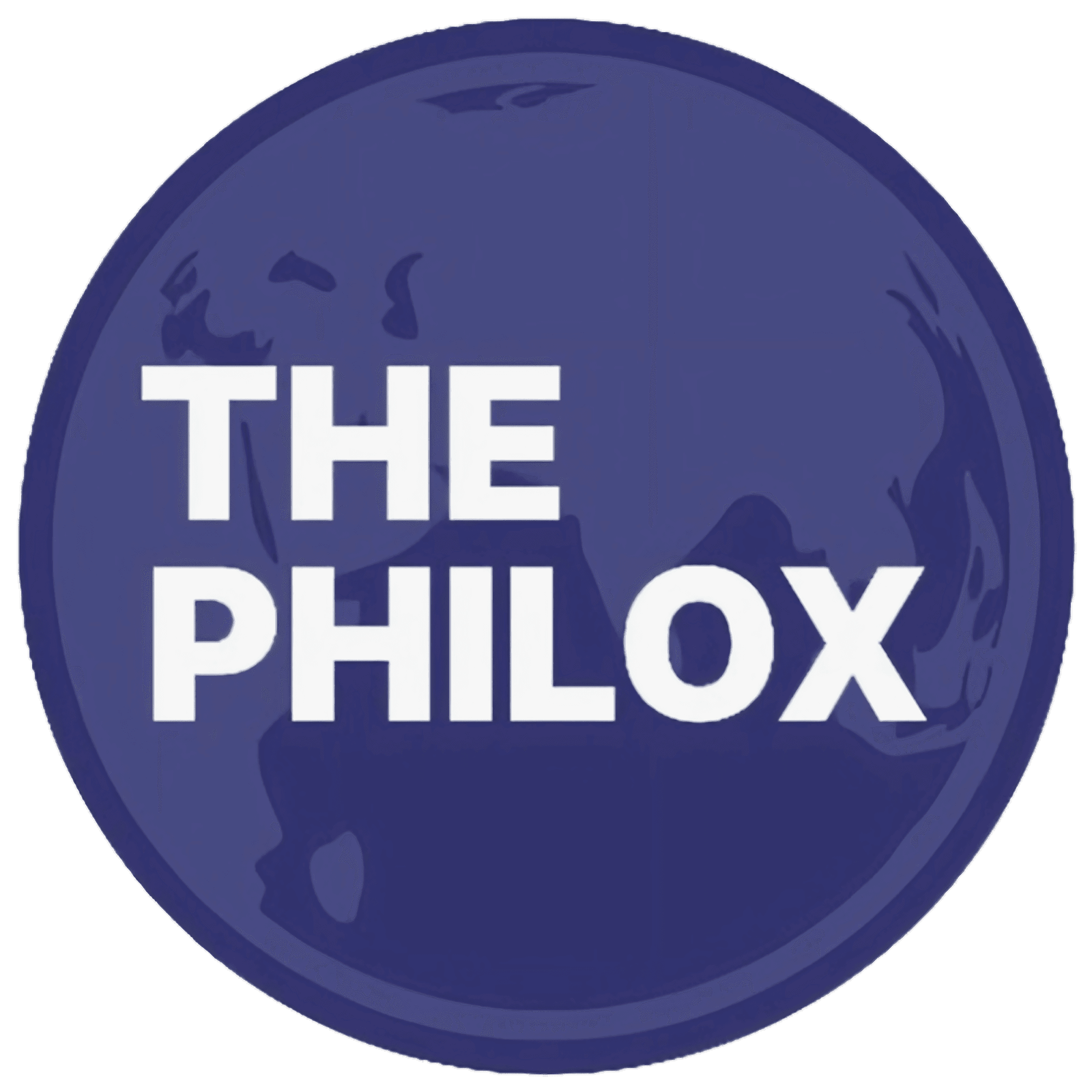The World Health Organization has recently sounded alarms over excessive use of social media, declaring it a possible catalyst for one of the biggest mental health crises in history. The same platforms that Instagram and WhatsApp boast about bringing the world closer together are now coming under scrutiny regarding their far-reaching neurological and health impacts.
This article addresses the science of these concerns and is more focused on the repercussions that engaging for more hours can have on our mental and physical wellbeing.
Chemical Addiction in the Brain Via Social Media
The design of social media sites is precisely intended to capture attention through mechanisms like infinite scrolling, algorithmically determined content delivery, and periodic reward-giving behaviors like likes, shares, and comments.
All these features engage the brain’s reward center-most particularly, dopamine, a neurotransmitter tied to pleasure and motivation.
Any like or message sends out dopamine in the brain, and this creates a feeling of happiness. In time, the users get hooked on the loop of such a mechanism, which works similarly to the patterns of substance addiction.
A study by Nature Communications, published in 2020, depicts how compulsive behavior is generated due to repeated exposure to rewards produced by dopamine-driven mechanisms and later makes it hard for users to leave their screens.
Impact on Mental Health
Heavy social media use has been linked to higher rates of anxiety, depression, and other mental illness cases. Research evidence also shows that since Instagram focuses much on visual posts and comparisons, it can amplify feelings of inadequacy and low self-esteem.
Key Findings:
1. Journal of Adolescent Health published a report in 2019 that had shown teenagers, who spent over three hours of their day browsing through social media, were probable to be reporting symptoms of depression by 27%.
2. American Journal of Preventive Medicine found in the 2021 published study that overusers of the social media interface are twice as likely to feel they are isolated while well connected virtually.
Brain Overstimulation
All these notifications, messages, and updates overexcite the brain, leading to a host of neurological issues, such as
1. Migraines: Bright screens and extended exposure can cause a light-sensitive individual to experience a migraine.
2. Reducing Attention: A report which was published on Nature Human Behavior in 2022 shows a significant reduction of average attention times, partly owing to the style in which one presents online contents in small unconnected pieces.
3. Diverts Brain Activity: Multitasking among apps as well as amongst tasks reduces deeper concentration in the brain, making it weaker both in memory storages and decision skills.
Health Influences in Physiological Health
Social media overuse affects the human body in a much more significant number of ways than the brains:
1. Heart Health
Stress from social comparison or cyberbullying raises the level of cortisol in the body and raises hypertension and other cardiovascular risks. In 2020, the Journal of Behavioral Medicine published a relationship between a long time exposure to social media and high levels of cortisol.
2. Sleep Disturbance
Blue light from the screens interferes with melatonin, which is the hormone that regulates sleep. The Sleep Foundation reports that 78% of people in social media show poor sleep due to use before an hour prior to sleep time.
3. Eye Strain
Digital eye strain occurs after too much display usage, characterized by dry eyes, blurred vision, and headaches. In 2023, the report claimed 70% among excessive users experiencing such discomfort.
Visualization of Impact
Screen Time Trends and Mental Health Correlation
| Category | 2015 | 2020 | 2025 (Est.) |
|---|---|---|---|
| Avg. Screen Time (Hours) | 2.5 | 3.8 | 5.1 |
| Anxiety Cases (Million) | 300 | 450 | 600 |
| Depression Cases (Million) | 322 | 350 | 420 |
Bar graph representing levels of dopamine at:

Breaking the Pandemic End
The issue of social media impacts calls for immediate responses from governments, corporations, and private individuals.
Education and awareness; schools and the workplace can conduct lessons about digital habits
Governments must develop guidelines on ways to eliminate some of the addiction features within platforms.
Interventions- Personal techniques. These include set “digital detox” times and utility tracking applications for curbing excess use.
Social media comes with both a power and a dark side: through Instagram and WhatsApp, cases of mental and physical health issues continue to grow.
Understanding its effects on brain chemistry, mental health, and well-being can be used proactively and to harness the benefits while reducing the risks; hence, WHO warns that it’s an urgent epidemic which requires immediate and collective action to ward off the impact on future generations.
Would you like me to elaborate about graph visualization, say, or one of the sections in greater detail?
Stay Connected and Share Your Stories
For all those inspired by stories of resilience and ambition, follow us on X/Twitter at https://x.com/ThePhilox and on Instagram at https://www.instagram.com/philoxbox/. For those with untold stories that you would love to share, please send them to contact@thephilox.com





One thought on “Instagram and WhatsApp Are Causing a Global Epidemic Concerns WHO”